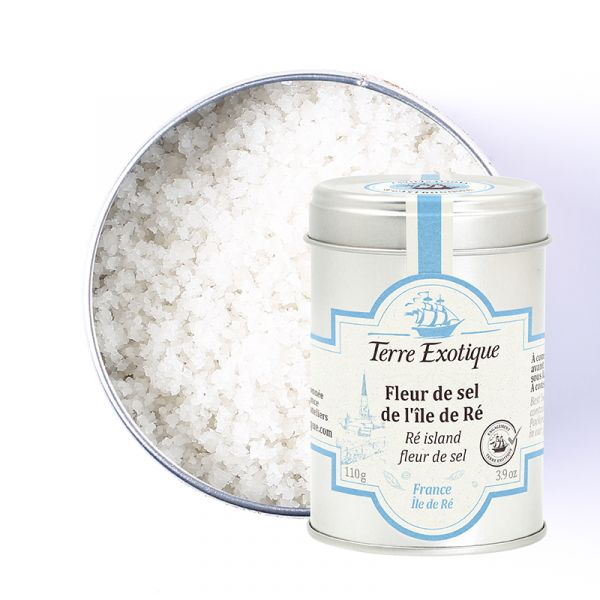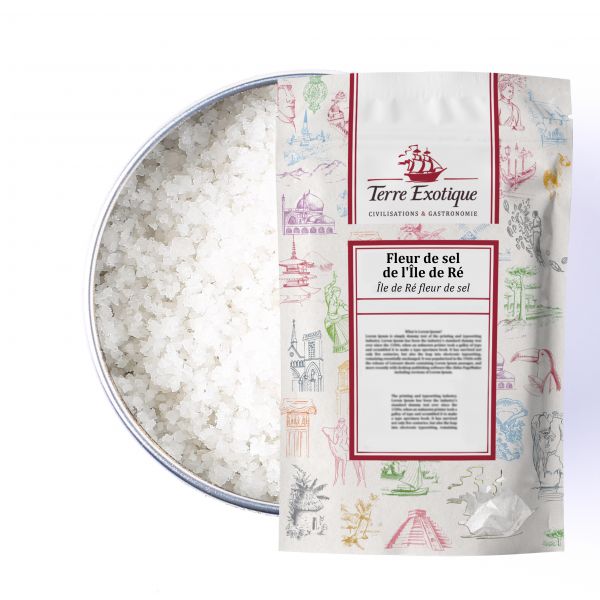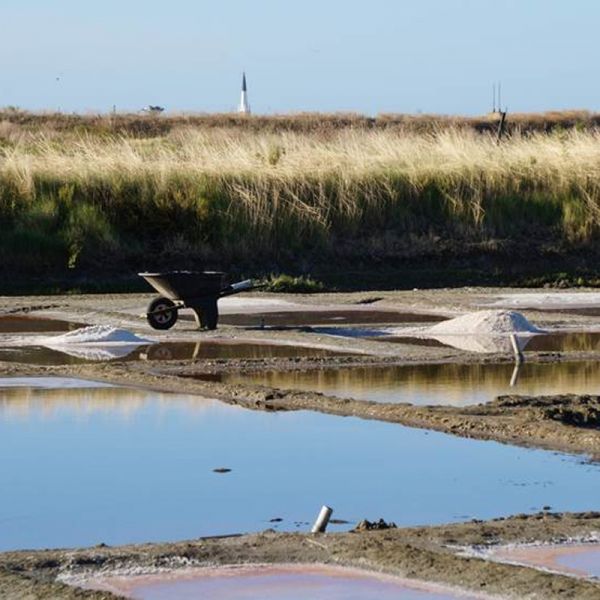







In Which Dishes to Use the Fleur de Sel from the Île de Ré?
The Fleur de Sel from the Île de Ré is a natural fleur de sel harvested by the salt workers of the Île de Ré with respect for traditions and the utmost care.
How to Use the Fleur de Sel from the Île de Ré?
Our recipe ideas to use the Fleur de Sel from the Île de Ré in your cuisine:
- caramel rice pudding with fleur de sel: as you make your caramel, deglaze it off the heat with cream while stirring, then add the butter and ½ tsp of fleur de sel until you get a smooth blond caramel;
- fleur de sel with cumin: add 15g of cumin to 50g of fleur de sel from the Île de Ré. Ideal with potatoes or carrots;
- fleur de sel cookies: sprinkle 1 pinch of fleur de sel from the Île de Ré on each of your cookies before baking;
- madeleines with fleur de sel: add ½ tsp of fleur de sel from the Île de Ré to your batter;
- roasted potatoes with fleur de sel: add 1 tsp of fleur de sel to your roasted potatoes;
- cherry tomato salad: sprinkle a few pinches of fleur de sel on your tomatoes before enjoying.
A Fine and Crystalline Fleur de Sel
The fleur de sel crystals are more delicate than coarse salt crystals. Fleur de sel integrates better with food and dissolves more quickly than other forms of salt because its texture is lighter and finer. It is important to use it after cooking to not alter its flavor.
The Fleur de Sel from the Île de Ré is the purest of fleur de sels but also one of the most natural.
The Fleur de Sel from the Île de Ré and Its Demanding Process
The fleur de sel from the Île de Ré is the result of delicate artisanal work, ideal climatic conditions: lots of sun, sea, and wind.
It is on the surface of the œillets (marsh salt basins) that this thin layer of white crystals forms, during the evaporation of water, under the combined action of the sun and the sea breeze. If the fleur de sel is not harvested, it falls to the bottom of the basins during the night and then crystallizes into coarse salt.
It is the harvesting methods of the salt workers that determine the finesse of the fleur de sel. Using a lousse, a tool similar to a large skimmer, the salt worker carefully collects his samples. The movements must be slow and precise, otherwise the fleur de sel is lost. The fleur de sel from the Île de Ré is not harvested, it is picked, just like that of Guérande!
The Fleur de Sel from the Île de Ré and Its History
A gem of the French coast, this island in the Charentais archipelago owes everything to Sau (salt). The first salt marshes would have appeared on the Île de Ré in the 13th century. The saline territories represented 1500 hectares in the 19th century, just over 15% of the island's surface area.
Just like the cultivation of potatoes and vines, the cultivation of fleur de sel has continued over the centuries. The love story between salt and the Île de Ré began in the Middle Ages; at that time, it was Vendean monks who exploited the lands near Ars-en-Ré to quickly transform these farms into one of the largest production sites in France. In 1942, a cooperative was created and named "Les Sauniers de l'Île de Ré" to masterfully manage the operations and guarantee a product of exceptional quality.
| Allergen | Absence |
|---|---|
| Native country | FRANCE |
| Ingredients | fleur de sel sea salt |
| Nutritional Info | VN Energie pour 100 g (energy for 100g) : 0 kJ / 0 kcal VN Matière grasse (fat) : 0 g Dont acide gras saturés (of which saturated fat) : 0 g VN Glucides (carbohydrate) : 0 g Dont sucres (of which sugars) : 0 g VN Protéines (protein) : 0 g Vn Sel (salt) : > 94 g |
| TRACES EVENTUELLES D'ALLERGÈNES | céleri, sésame, moutarde, fruits à coques. |
 Français
Français 